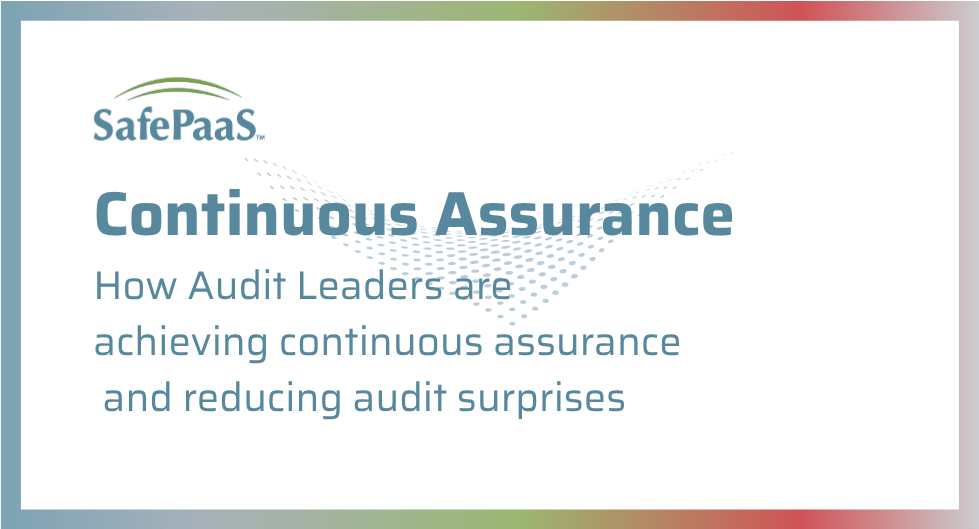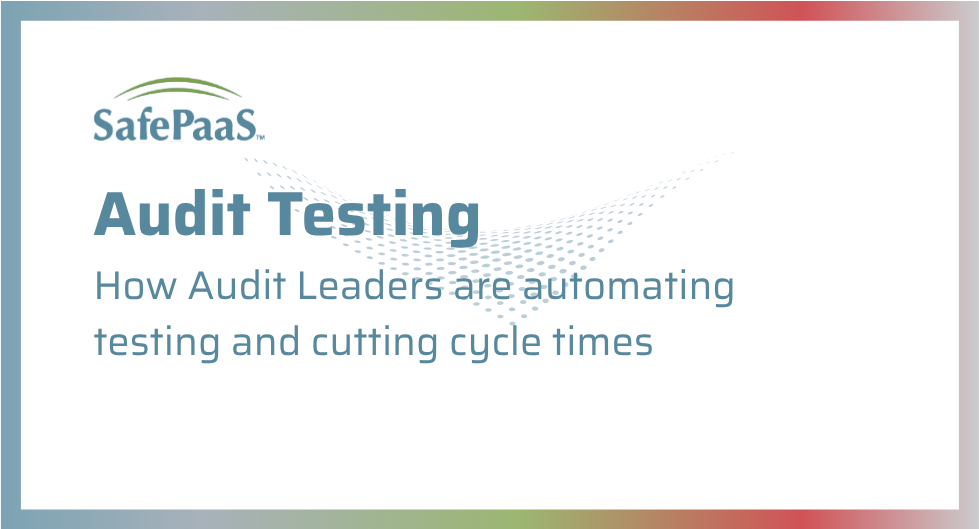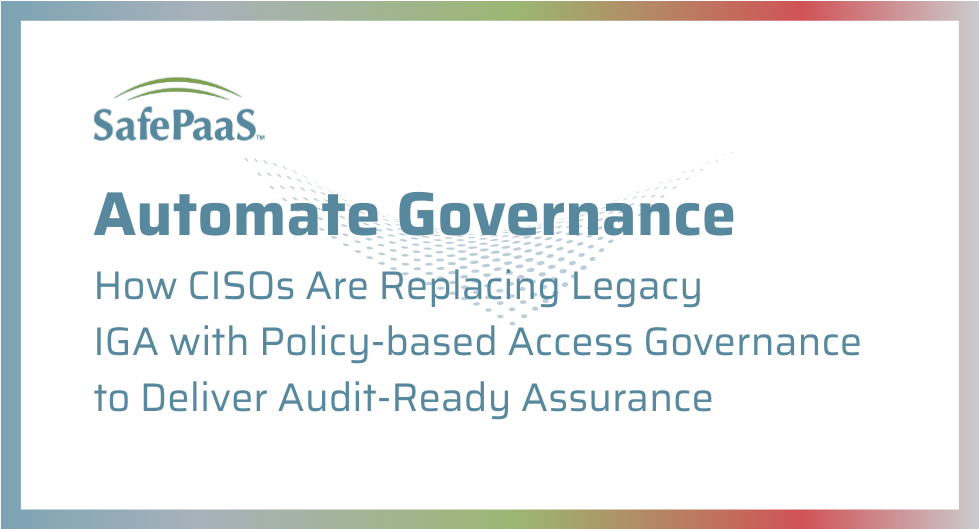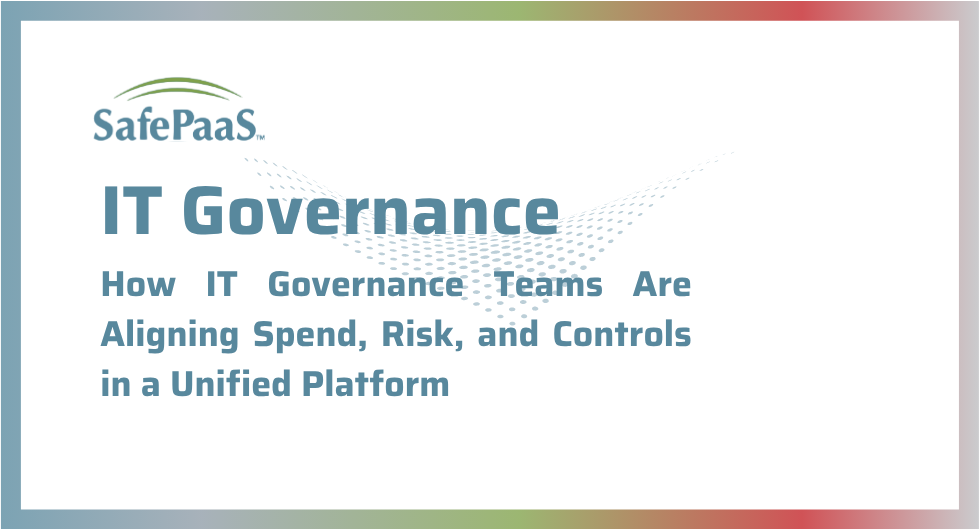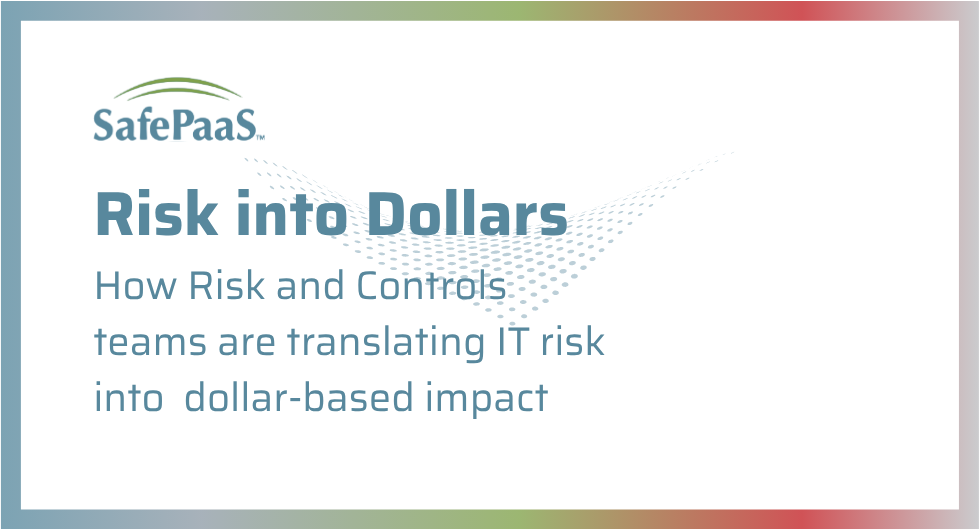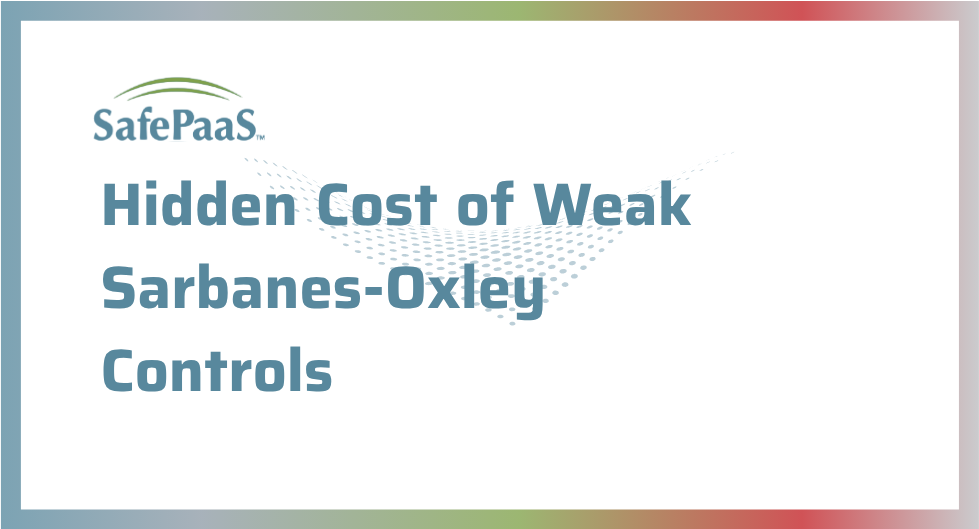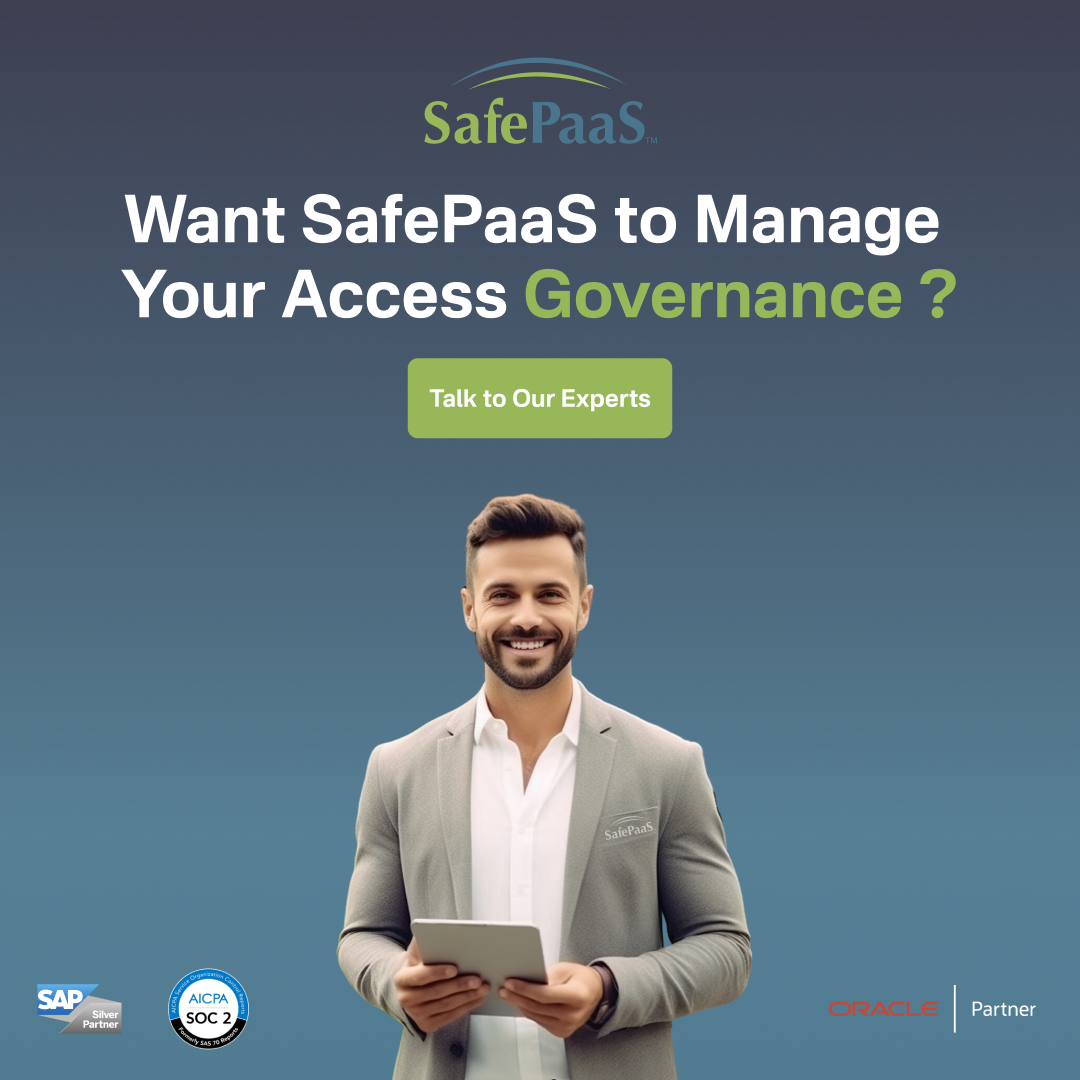The Critical Role of Access Governance
Ensuring the security of your SAP environment is critical. As cyber threats evolve and regulations stiffen, effective policy-based access governance has become essential for enhancing security, protecting data, and maintaining operational efficiency.
SAP systems are likely the core of your business, housing critical data and vital processes. However, their complexity also makes them vulnerable to various security risks. Traditional security measures are no longer sufficient to protect you against sophisticated digital threats, especially when managing user access rights and permissions.
This guide dives into the essential role of access governance solutions in protecting your SAP systems while addressing the unique challenges they present. It highlights the risks associated with ineffective access controls and explores the complexities of SAP environments. Most importantly, it demonstrates how a well-implemented access governance strategy can mitigate these risks, enhance control effectiveness, and fortify your overall security posture.
Whether you’re a CISO, IT manager, or SAP administrator, this guide will provide you with the knowledge and insights needed to secure your SAP landscape effectively. Integrating SAP systems with centralized monitoring strengthens security and protects critical assets from threats.
Understanding the Risks
1. Unauthorized Access and Data Breaches
While managing access to resources, you must confront the pressing risk of unauthorized access and potential data breaches. In recent years, the average cost of a data breach has risen to $4.88 million, underscoring the significant financial consequences that such incidents can have on your organization.
The high cost of data breaches
If you experience a data breach, you’ll likely face not only immediate financial losses but also long-term consequences such as:
Reputational damage
Loss of customer trust
Legal liabilities
Regulatory fines
Operational disruptions
How unauthorized access occurs in SAP systems
Unauthorized access to your SAP systems can occur through various means:
Exploitation of vulnerabilities in SAP applications
Weak or compromised user credentials
Misconfigured access controls
Insider threats exploiting excessive privileges
2. Segregation of Duties Conflicts
Segregation of Duties (SoD) is a critical control designed to prevent any single user from gaining excessive authority within your systems or processes. For instance, the individual responsible for creating a purchase order should not also have the authority to approve it. Ineffective Segregation of Duties practices can result in heightened risks, including data breaches, fraud, control violations, and operational inefficiencies.
Consequences of ineffective SoD in SAP:
Increased risk of data breaches and fraud
Compliance violations
Financial misstatements
Operational inefficiencies
3. Over-Privileged Accounts
In your SAP system, you may face the risk of “privilege creep,” or dormant accounts where users accumulate excessive privileges over time. This poses a significant threat to your system’s security.
The danger of accumulated privileges
Over-privileged accounts have more access than necessary for their roles, which:
Increases the potential impact of a compromised account
Violates the principles of least privilege and Zero Trust
Complicates access management and auditing
How over-privileged accounts lead to increased risk
Excessive privileges can result in:
Unintentional data exposure or modification
Increased attack surface for malicious actors
Difficulty in tracking and auditing user activities
4. Compliance Violations
Your SAP systems likely handle and store data that must comply with various privacy requirements. This data may include sensitive information related to financial transactions, customer records, and employee details, all of which are governed by laws and industry standards.
Overview of key regulations (SOX, HIPAA, GDPR)
Sarbanes-Oxley Act (SOX): Requires strict internal controls for financial reporting
Health Insurance Portability and Accountability Act (HIPAA): Mandates protection of sensitive healthcare information
General Data Protection Regulation (GDPR): Enforces strict data protection and privacy measures for EU citizens’ data
Penalties and consequences of non-compliance
Legal action and lawsuits
Mandatory audits and oversight
GDPR violations can lead to fines of up to €20 million or 4% of global annual turnover, whichever is higher
The Complexity of SAP Systems
1. Inefficient User Lifecycle Management
As you manage your SAP environment, you’ll face significant challenges in managing user access throughout the user lifecycle. These challenges span from onboarding new employees and assigning appropriate access rights, adjusting permissions as roles change, and finally, promptly revoking access when employees leave your organization.
Challenges in managing user access lifecycle
Onboarding: Ensuring new users receive appropriate access rights
Role changes: Adjusting permissions as users move between teams or roles
Offboarding: Quickly revoking access when users depart
Risks associated with outdated access rights
Accumulation of unnecessary privileges over time
Former users retaining access to sensitive systems
Increased potential for insider threats and data breaches
2. Complicated Authorization Models
SAP’s complex permission structure makes traditional access management methods inadequate. This intricate system of roles, profiles, and authorizations creates a labyrinth of access controls that can be challenging to maintain effectively using conventional approaches.
Understanding SAP’s permission structure
SAP uses a complex system of:
Roles: Collections of authorizations assigned to users
Profiles: Groups of roles that define a user’s overall access
Authorizations: Permissions for specific actions or data access
Why traditional access management falls short
Difficulty in maintaining a clear overview of user permissions
Increased likelihood of unintended access assignments
Challenges in identifying and resolving access conflicts
3. Lack of Visibility and Control
Using manual access management processes in SAP environments often leads to insufficient oversight and control. This reliance on manual intervention increases your risk of human error and results in inconsistent application of access policies. As a result, you may find it challenging to effectively monitor access to sensitive data, which can compromise the security and integrity of your SAP environment.
The limitations of manual access management
Time-consuming and error-prone processes
Inconsistent application of access policies
Difficulty in tracking access changes over time
The need for comprehensive access oversight
Real-time visibility into user access rights
Automated detection of policy violations and anomalies
Centralized management of access across multiple SAP systems
4. SaaS Sprawl and Integration Challenges
The proliferation of SaaS applications in your enterprise environment adds another layer of complexity to access management. This challenge is particularly acute in your SAP ecosystem, where numerous third-party applications often integrate with core ERP functionalities, creating a complex web of interconnected systems and data flows.
The rise of SaaS applications in enterprise environments
Increased adoption of cloud-based solutions
Expansion of the potential attack surface
Diverse range of applications integrated with SAP systems
Complexities in managing access across interconnected systems
Ensuring consistent access controls across platforms
Maintaining visibility into user activities across multiple systems
Coordinating access provisioning and de-provisioning across integrated applications
Policy-based Access Governance as the Solution
Defining Access Governance
Access governance provides a framework to effectively manage user access to systems and sensitive data. It ensures that you grant appropriate access levels to the right individuals while protecting information from unauthorized access. You can establish policies for granting and revoking permissions, improve security, and ensure compliance with regulations. Continuous monitoring and auditing of access rights allow you to quickly identify and address potential vulnerabilities, ultimately safeguarding data integrity and reducing the risk of breaches.
Key components and principles
Privileged Access Management
Workflow Orchestration
Roles Management
Policy Development and Management
Segregation of Duties and Sensitive Access
Data Access Control and ITGC Automation
Periodic Access Reviews and Certification
Policy-based Identity Access Lifecycle Management
How it differs from traditional access management
Policy-based not role-based
Supports the lowest level in the security model
Incorporates segregation of duties management
Fine-Grained Control: Policies allow organizations to set precise, conditional access rules. For example, access can only be granted to a specific application if the user is within the corporate network and using a company-managed device.
Adaptive Identity Security: Policy-based access can adapt to changes in user roles, responsibilities, and the security landscape. It allows for immediate adjustment of access based on evolving needs.
Risk Mitigation: By continuously evaluating risk factors, policy-based access governance helps proactively identify and respond to security threats, reducing the potential for data breaches.
Addressing Unauthorized Access and Data Breaches
Policy-based Access governance solutions implement strong mechanisms to prevent and detect unauthorized access in your SAP environment. These solutions leverage advanced technologies and best practices to create a robust defense against potential security breaches you may face. By implementing these solutions, you can better protect your critical data and systems from unauthorized access attempts.
Implementing strong authentication and authorization
Multi-factor authentication
Policy-Based Access Control (PBAC)
Granular permission and attribute visibility
Continuous monitoring and anomaly detection
Real-time analysis and logging of user activities
Behavioral analytics to identify suspicious patterns
Automated alerts for potential security incidents
Resolving Segregation of Duties Conflicts
The right access governance solution will provide automated capabilities for managing Segregation of Duties. These solutions continuously monitor your environment to identify potential conflicts and ensure compliance with established policies, giving you greater control and visibility over critical business processes.
Automated conflict detection and resolution
Continuous scanning of user roles and permissions
Identification of potential SoD conflicts
Suggestions for conflict resolution
Implementing effective role design
Role simulation and optimization
Creation of clean, well-defined roles
Regular access review and maintenance
Managing User Privileges
Access governance solutions ensure that your user privileges remain appropriate throughout the user lifecycle. This approach helps you maintain control over access rights as your employees move through different stages of their employment, from onboarding to role changes and eventual offboarding.
Regular access reviews and certifications
Scheduled fine-grained reviews of user access rights
Manager-driven certification workflows with three levels of approvals
Identification and removal of unnecessary privileges
Automated de-provisioning and access adjustments
Immediate revocation of access upon departure
Automated adjustments based on role changes
Temporary access management for project-based work
Ensuring Compliance
Access governance solutions streamline your compliance processes and provide you with comprehensive reporting capabilities. By implementing access governance solutions, you’ll benefit from automated audit trails, simplified evidence collection, and customizable reporting tools that help you meet requirements more efficiently.
Streamlining audit processes
Centralized repository of access-related information
Automated generation of audit trails
Simplified evidence collection for audits
Generating comprehensive compliance reports
Pre-built reports for common regulatory requirements
Customizable reporting capabilities
Real-time compliance dashboards
Implementing a Policy-based Access Governance Solution
1. Assessing Your Current State
Before implementing an access governance solution, it’s critical to understand your current security stance. You should thoroughly assess your existing access controls and identify potential vulnerabilities in your SAP environment. This evaluation will help you establish a baseline and prioritize areas for improvement in your access governance strategy.
Conducting a risk assessment
Identify critical systems and data
Evaluate existing access controls
Assess the potential impact of security incidents
Identifying gaps in existing access controls
Review current access management processes
Analyze user roles and permissions
Identify areas of non-compliance or excessive risk
2. Choosing the Right Solution
Selecting an appropriate access governance solution is key to successful implementation. When choosing a solution, you should carefully evaluate your organization’s specific needs and challenges. You’ll want to consider factors such as scalability, integration capabilities with your existing SAP landscape, and the solution’s ability to address your unique security and compliance requirements.
Key features to look for in access governance solution
Privileged Access Management
Policy management
Provisioning
Integrated fulfilment
Access certification / review
Identity orchestration
Roles management
Advanced access analytics
Integration capabilities with SAP and other systems
Native connectors for SAP modules
API-based integration with non-SAP applications
Support for cloud and hybrid environments
3. Best Practices for Implementation
A phased implementation approach is an effective way to ensure success while minimizing disruption. By gradually rolling out access governance solutions, your organization can address challenges incrementally, refine strategies at each stage, and maintain smooth business operations throughout the process. This method reduces the risk of operational interruptions and allows for continuous improvement as you expand the scope of your implementation.
Phased deployment
Start with critical systems and high-risk areas
Gradually expand to cover all SAP modules
Extend to integrated applications and SaaS solutions
Gaining stakeholder buy-in and user adoption
Communicate the benefits of access governance
Involve business units in policy development and role design
4. Measuring Success
Defining and tracking key performance indicators is essential for evaluating the effectiveness of your access governance program. By establishing clear metrics, you can measure the impact of your efforts and identify areas for improvement in your SAP environment.
Key performance indicators for access governance
20% reduction in internal controls management
25% productivity increase across business applications
Up to 16% reduction in ERP Total Cost of Ownership
75% reduction in auditor costs of retesting failed controls
$1.36M annual average saving with automated access and process controls
87% reduction in help desk and management with automated compliant provisioning
Up to 20% cost reduction and 300+ hours saved on audit effort due to less auditor testing
Continuous improvement strategies
Regular review and update of access policies
Ongoing optimization of roles and permissions
Incorporation of emerging technologies and best practices
As you look to the future, remember that the significance of access governance will only increase, particularly with the advancements in artificial intelligence and machine learning reshaping security solutions. By focusing on access governance now, you position yourself to address upcoming security challenges effectively.
Establishing a strong foundation of access protocols will enable you to remain agile in the face of emerging threats and evolving regulations. With these practices in place, you can leverage your SAP systems to drive innovation and growth while ensuring compliance and maintaining rigorous security standards. Your proactive approach will set you up for success in the dynamic environment ahead.
Secure your SAP environment today with SafePaaS’s comprehensive access governance platform. Take the first step towards robust security, compliance, and operational efficiency by scheduling a demo with our team.


